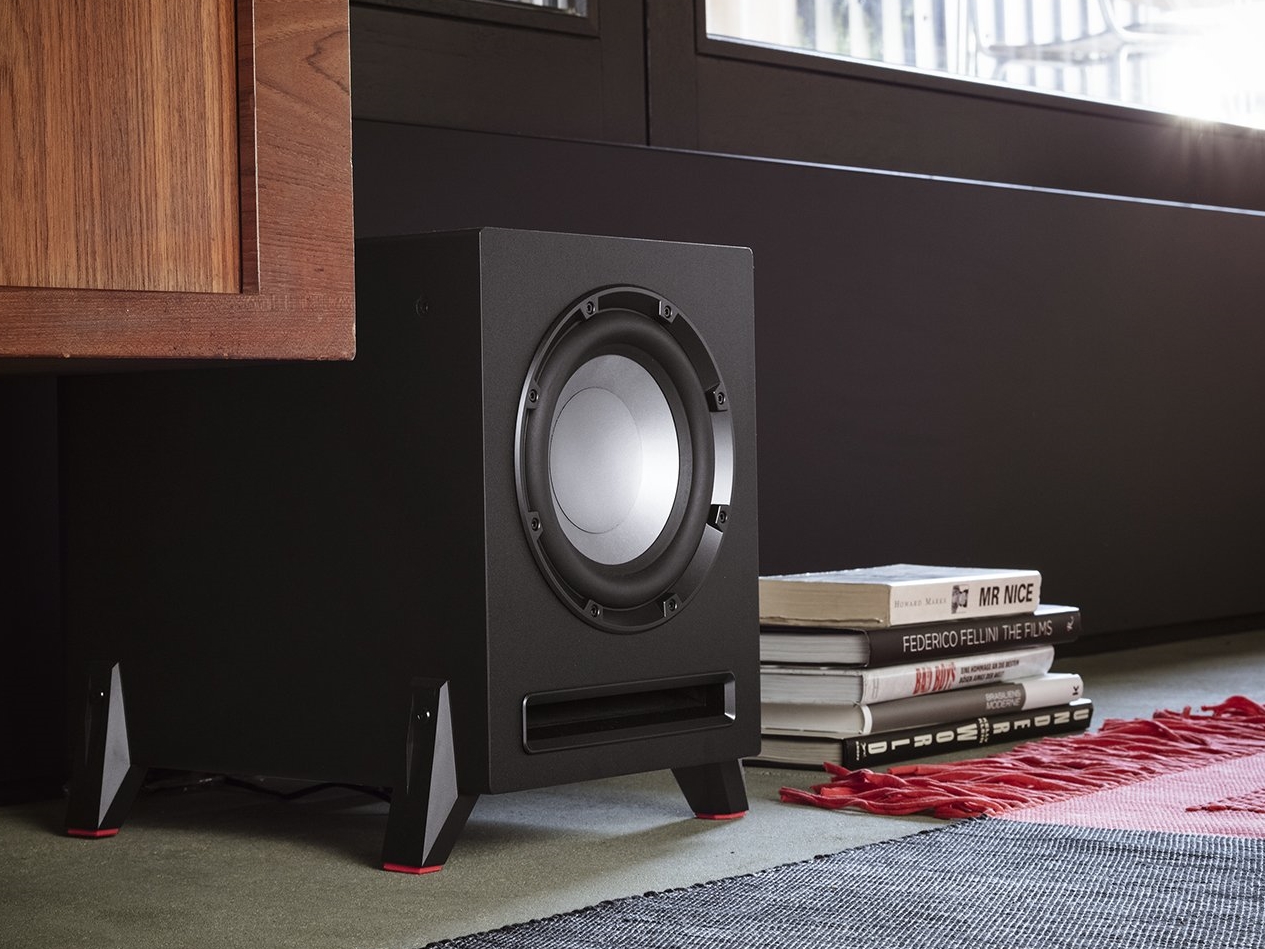Crumbling bridges, breaking glass, screaming children, heavy bass – whoever believes these things have nothing in common, is wrong. They are all created through vibrations and, in particular, strong vibrations are created from natural frequencies. Read on as we explain the science behind this principle and what resonance catastrophes are, as well as look into the roll resonance plays when it comes to loudspeakers.
Everything vibrates, but how?
The vibration of headphones is always the reaction from an energy impulse. A hand can start a pendulum to swing, the wind can shake a skyscraper, and a coil with the help of a magnet can move a loudspeaker membrane. How strong something vibrates on the applied power of the vibration, as well as the material, including the construction of the vibrating system. On the other hand, the frequency with which the energy impulses act is of great importance. For if the frequency of the supplied energy coincides with the natural frequency of the body, the body vibrates with a particularly high amplitude.
How the phenomenon of the resonance frequency looks like in practice can be understood by means of a pendulum: If a spring pendulum is a periodical, i.e. at regular intervals, supplied with energy that corresponds to the pendulum’s natural frequency, the pendulum’s deflection is at its greatest. If the pulses of energy are at a lower or higher frequency than the natural frequency, the pendulum’s deflection will be smaller.
On a swing you can try out for yourself how the resonance frequency works. When you hit a swing at its highest point, the energy supply is exactly at the natural frequency of the system. This is why the swing has such a large swinging momentum. If you hit before or after the swing reaches its highest point, the force is transmitted less efficiently or even goes nowhere.
From good to bad vibrations
The body of an acoustic guitar, a swing, a glass or a bridge can vibrate at their respective resonant frequency. But this is not desired everywhere and can even cause great damage. This is because systems can vibrate so violently that the construction cannot withstand the stress.
This phenomenon can be observed when a person points his voice at a wine glass from a short distance. If the pitch of the voice corresponds exactly to the natural frequency of the glass, it breaks after a relatively short time – the so-called resonance catastrophe occurs. If the vocal chords cause the air molecules to vibrate at a higher or lower frequency, the glass remains intact. The natural frequency of the glass can be heard when you strike it with an object.
One of the most famous resonance catastrophes occurred in the USA in 1940, when the wind caused the Tacoma Narrows Bridge to vibrate so strongly that it collapsed.
To avoid resonance catastrophes, the highway code prohibits groups of people such as military units from marching in step across bridges.
With musical instruments, on the other hand, resonance is a deliberate effect to increase the volume of sounds. In an acoustic guitar, the body acts as a mechanical amplifier of sound waves that are triggered by the strings. The guitar body is constructed in such a way that the resonance frequency occurs even at different pitches.
Loudspeakers from Teufel
[product id=”30450,26075,30472″]
Resonance effects in loudspeakers undesirable – with one exception
The resonance frequency is not welcome in loudspeakers. The loudspeakers are constructed in such a way that the various components do not vibrate at their resonance frequency. This would mean that sounds in the same frequency range as individual components would be reproduced much louder than others. This is where the crossover network comes into play: in multi-channel systems, it directs the signals to the speakers according to their frequency.
Resonance effects should not occur in the loudspeaker cabinet either. These can occur when the membrane on its back radiates sound into the interior of the loudspeaker. This sound can cause the cabinet to vibrate and thus have a negative effect on the sound image. In order to prevent this, the loudspeaker cabinet is fitted with a damper that absorbs the sound waves radiated to the inside.
The exception to this rule are bass reflex speakers. These cabinets have a tubular opening through which the sound radiated to the inside – at certain low frequencies – can escape into the room. This works on the principle of the Helmholtz resonator, which we explained in our text on subwoofers.
We need bass: Teufel bass for deeper vibrations

- ▶ Mono-Subwoofer US 2106/1 SWOpens in new tab:This beginner-friendly subwoofer offers a powerful bass without disturbing flow noise despite its compact size. This is achieved with two bass reflex tubes.
- ▶ Ultima 40/20 “2.0>5.1 Extension Set Surround”Opens in new tab: The Ultima 40/20 HiFi speakers are real devil classics for the home. With this set, you can expand your stereo system to 5.1 surround sound. A T 10 subwoofer provides ample resonance in the bass range.
More products from Teufel
[product id=”25941,27916,30488″]
Conclusion: The resonance frequency is useful
- At the resonant frequency, the natural frequency of an oscillating system coincides with the frequency of the supplied energy.
- In the case of resonance, the deflection of the oscillation becomes larger.
- In acoustics, a higher amplitude of sound waves means a higher sound pressure and thus a higher volume.
- Resonant frequencies are generally undesirable for loudspeakers.
- Bass reflex speakers are an exception. These amplify the low frequencies according to the principle of the Helmholtz resonator.
Finally, a “Bugs Bunny” classic on the subject:




